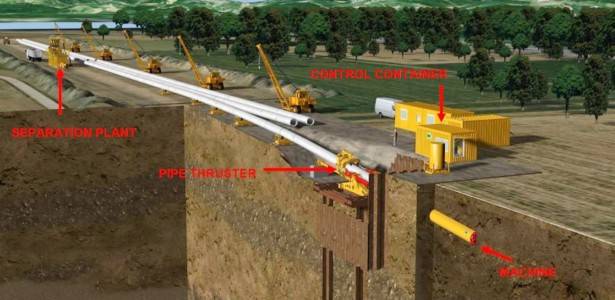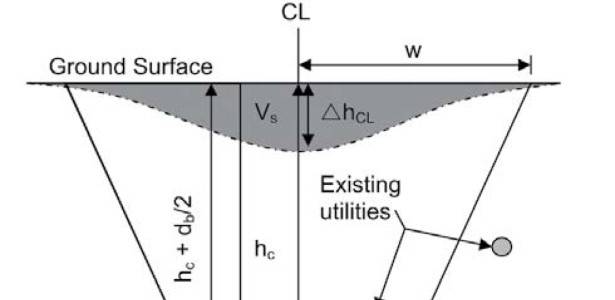Abstract
There is a unique technology called Direct Pipe InstallationTM (DPI) developed by Herrenknecht Tunnelling Systems (Herrenknecht) which is becoming a more prominent construction method in the pipeline crossing industry. This construction technique is completed by connecting a micro tunnel boring machine (MTBM) to a section of welded pipeline and utilizing a thruster on surface to push the pipeline through the ground while excavation of the soil by the MTBM commences. Evaluation of the total thrust force required to advance the MTBM during DPI construction in clayey soil is the focus of this research.
The current state of practice calculation method was developed by Herrenknecht (Pruiksma, Pfeff, & Kruse, 2012), utilizing concepts from both horizontal directional drilling (HDD) and conventional micro-tunnelling theories. Following extensive review of the calculation method, the most sensitive parameters were determined. Among the most sensitive were the soil to pipeline interface friction, the roller to pipeline interface friction, the coefficient of horizontal earth pressure, and the applied pressure above minimal pressure. Using the data obtained from four DPI construction projects, and geotechnical information from the site characterization documents, total realized thrust was compared to the current state of practice calculation. The calculation over predicted the realized thrust in three case studies (maximum average percent error of 319%), and under predicted in a single case study (minimum average percent error of 9%) while tunnelling in cohesive soil conditions.
Current calculation methods show that friction generation is the main contribution to the total thrust force; however, findings from this research show that the soil reaction at the cutting face is underestimated, and the frictional component may be severely over estimated. Using linear regression analysis for specific sections of the DPI tunnel alignment, the pipeline roller interface, iii lubrication and pipeline to soil interface friction values were estimated. As well, the realized front cutting face force determined from the analysis was larger than the predicted value at the same location along the tunnel alignment. As suggested in this research, after decreasing the frictional resistance and increasing the front cutting face force in cohesive soil, it is expected that the total thrust calculation will more closely predict the realized thrust force on future DPI projects
Author
Stefan Goerz, M.Sc., P.Eng, P.E, CCI Inc.,




